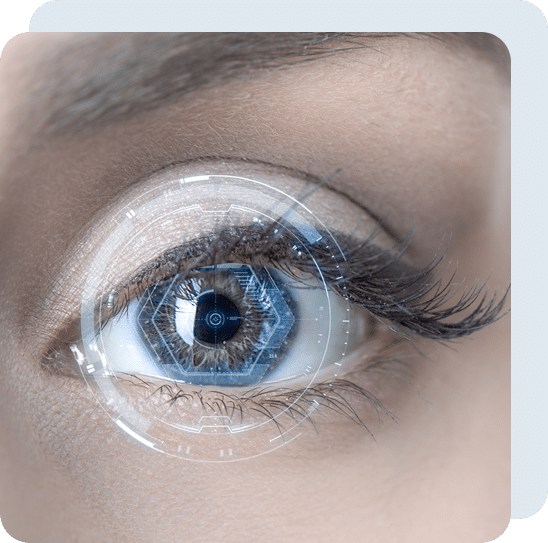Trans-PRK is a cutting-edge laser eye surgery that has been gaining popularity in recent years. This surgical procedure can correct a wide variety of vision problems, including myopia, hyperopia, and astigmatism. In this guide, we will discuss everything you need to know about trans-PRK surgery, including the risks and benefits involved.
Contents
What Is Trans-PRK?
 Trans-PRK (photorefractive keratectomy) is a surgical procedure used to correct vision problems like nearsightedness, farsightedness, and astigmatism. It is a type of laser eye surgery, which is known as refractive surgery. This is also known as no-touch PRK.
Trans-PRK (photorefractive keratectomy) is a surgical procedure used to correct vision problems like nearsightedness, farsightedness, and astigmatism. It is a type of laser eye surgery, which is known as refractive surgery. This is also known as no-touch PRK.
The actual process of trans-PRK includes using a special laser to reshape the cornea and improve your vision. This procedure is relatively painless and can be completed in about 15 minutes per eye. After the surgery, you’ll need to wear protective glasses for several days while your eyes heal, and you may still need to wear glasses or contacts to help you see clearly.
It is generally a safe and effective way to correct your vision and improve your quality of life. So, if you are considering it, be sure to consult a professional first.
Is Trans-PRK Better Than LASIK?
While the technology and overall procedure of Trans-PRK are similar to that of LASIK, there are some key differences between the two. The main difference between Trans-PRK and LASIK is that the former does not involve the creation of a flap in the cornea while the latter does. Because of this, there are some advantages and disadvantages to each procedure.
Additionally, Trans-PRK has been shown to have a longer recovery time than LASIK. While the healing process for Trans-PRK typically lasts for four to six days compared to two to three days with LASIK, some studies have shown that it can take up to eight weeks for full visual recovery.
Depending on your individual situation and needs, one procedure might be better suited than the other. For example, individuals with thinner corneas and deeper corrections may benefit more from Trans-PRK than LASIK.
What Is The Difference Between PRK and Trans-PRK?
Well, the main difference between the two is that trans-PRK involves the use of a laser to reshape the cornea. PRK, on the other hand, relies solely on an excimer laser to reshape it. Trans-PRK also requires more advanced equipment and may involve longer recovery times than regular PRK.
The most significant difference is the way the outer layer of the cornea is removed. With PRK, a surgeon will use an instrument called a trephine to remove the outer layer or epithelium. During trans-PRK, this process is done with a laser beam instead of manually. This process makes it more precise and reduces any discomfort for patients during recovery. It also helps to reduce the risk of infection since it eliminates any contact with surgical instruments.
Another difference between the two is that trans-PRK offers better visual acuity for some people. That’s because its laser technology allows for a more precise reshaping of the cornea, which can result in better vision after treatment.
At the same time, it can also be more expensive than PRK since it requires more advanced equipment and specialized surgeons.
Overall, both procedures have their own advantages and disadvantages. However, if you’re looking for a more precise reshaping of your cornea with better visual acuity and less discomfort during recovery, then trans-PRK may be the right choice for you.
How To Prepare For The Surgery?
 When you are preparing for trans-PRK, there are a few steps you should take to ensure the best outcome.
When you are preparing for trans-PRK, there are a few steps you should take to ensure the best outcome.
- First, have a complete eye exam with your ophthalmologist. Your doctor will be able to look for any underlying conditions that could affect your procedure and determine if surgery is right for you. Make sure to tell your doctor about any medications you are taking and any allergies or medical problems you may have.
- Next, your doctor will give you pre-operative instructions to follow before the surgery, such as not wearing makeup or contacts for a certain period of time. Be sure to ask your doctor questions if there is anything you do not understand or need clarification on.
- You should also arrange for someone to drive you to and from the surgery, as it is likely that your vision will be impaired immediately following the procedure. It is also important to have someone stay with you for at least 24 hours after surgery in case an emergency arises.
- Finally, make sure to get plenty of rest before your surgery, eat a balanced diet, and avoid any strenuous activity or exercise. Additionally, you may want to purchase some sunglasses with UV protection so that your eyes can heal without the risk of further damage from sunlight.
By following these steps and keeping your doctor informed throughout the process, you are much less likely to experience any complications during or after your trans-PRK surgery.
What Are The Pros And Cons?
Trans-PRK (photorefractive keratectomy) is a type of laser vision correction that can correct nearsightedness and astigmatism. There are various pros and cons of this procedure that should be taken into account before deciding if it is right for you. Let’s discuss both below:
Pros
Some of the pros are:
- The procedure is relatively fast and has a quick recovery time.
- It is great for those who want to avoid the risks associated with traditional corneal flap surgeries.
- This results in less discomfort than other laser eye treatments because only the outer layer of your cornea is removed. This also reduces the risk of infection.
- And finally, it is a safe procedure with few long-term complications or side effects.
Cons
On the other hand, here are some of the cons:
- The vision may take longer to stabilize after Trans-PRK than after other laser eye treatments.
- There may be a higher risk of glare, halos, and night vision issues in the first few weeks after the procedure.
- It is not suitable for those with very high prescriptions or large pupils, as they may not be able to achieve the desired results.
- There is a risk of under or overcorrection of your vision following the procedure.
Overall, this surgery can be an effective way to correct vision issues but it is important to weigh all the pros and cons before making a decision. To make sure that you are making an informed decision, be sure to consult with a qualified eye care professional. They can provide you with more information about Trans-PRK and help you decide if it is the right procedure for your needs.
How Long Does Trans-PRK Last?
When you are considering a vision correction procedure such as trans-PRK, one of the most important factors to consider is how long it will last. Trans-PRK is a very safe and effective way to correct your vision, however, there are some things to take into account when determining the duration of this procedure.
The first thing to understand is that as long as you maintain a healthy lifestyle and follow the instructions given to you by your eye doctor, trans-PRK should not need to be repeated. Most people will see an improvement in their vision within 24 hours of the procedure. Although this may vary depending on your individual situation.
After that time, it is likely that your vision will remain stable for many years. In fact, studies have shown that many patients who underwent trans-PRK achieved 20/20 vision or better for up to four years after their procedure. This is great news for those looking for a long-lasting solution to their vision problems.
What Is The Success Rate Of This Surgery?
The success rate of Trans-PRK surgery is very high. On average, between 90 and 95 percent of patients who have this procedure will achieve 20/20 or better vision after just one treatment. Patients may require additional treatments to attain their desired vision, but the overall success rate remains high.
The recovery period varies from patient to patient, but typically vision begins to improve within a few days and can take up to three months for the full effect. It is important to follow your doctor’s instructions carefully during this time in order to ensure the best possible results.
Conclusion
To conclude, trans-PRK may be the best vision correction procedure for those looking to improve their vision without surgery. It can provide excellent results while avoiding the risks associated with laser eye surgery. Such as long-term dry eyes and post-operative complications.
By speaking with an experienced ophthalmologist or optometrist, you will be able to determine if trans-PRK is right for you. With the right doctor and appropriate care, trans-PRK can be a great way to improve your vision and see clearly again!
Lasik surgery is a safe 10-minute procedure to help you get rid of glasses. MantraCare offers the most advanced Lasik options. If you have any questions on lasik surgery feel free to reach out to us at +91-9711116605.
